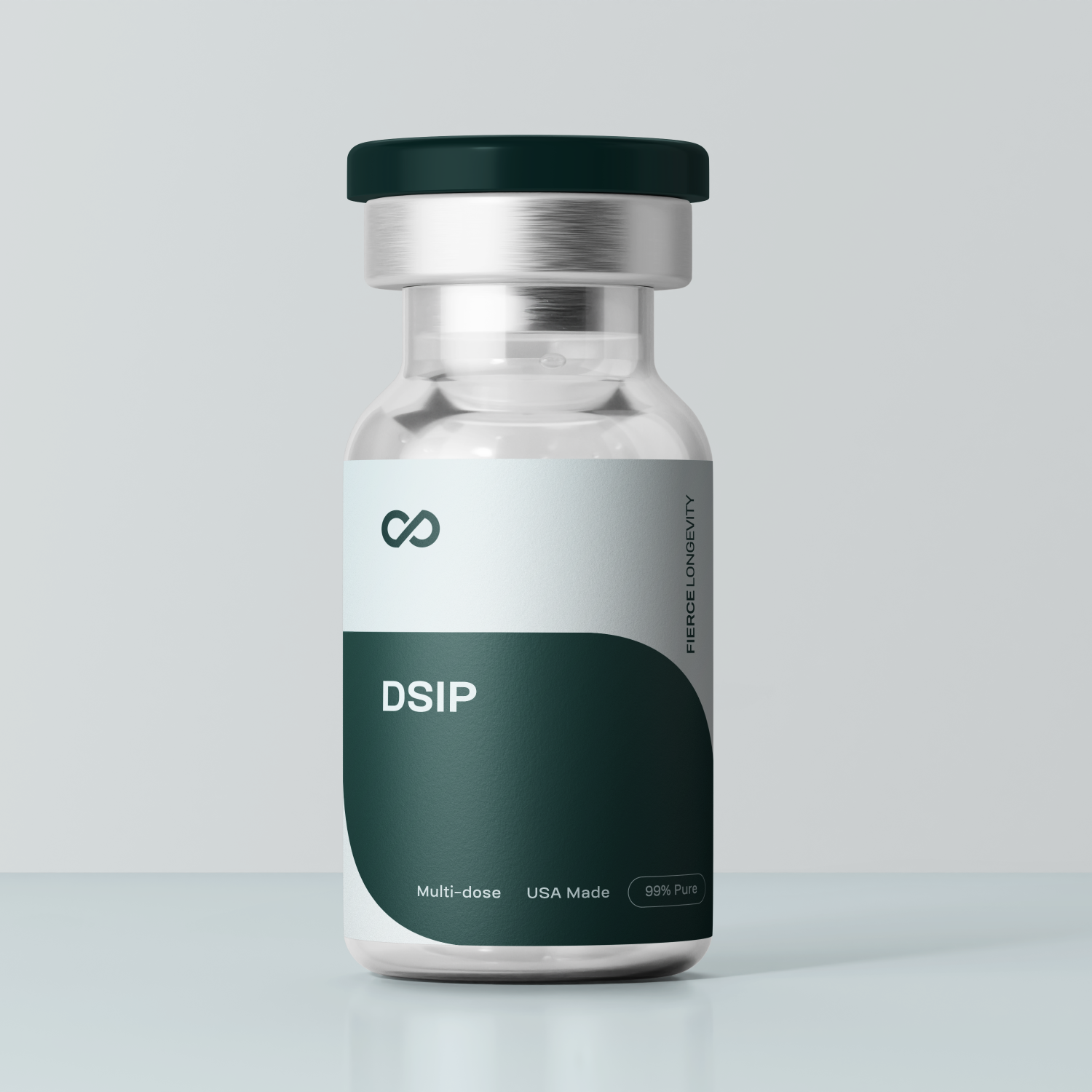
DSIP
DSIP is a short-chain peptide hormone naturally found in the hypothalamus, pituitary gland, and blood plasma. It plays a role in sleep regulation, stress hormone balance, and pain modulation, making it a promising compound for studies related to insomnia, anxiety, and recovery. Each vial is HPLC-tested to ≥99% purity, endotoxin-screened (<0.1 EU/mg), and manufactured in the USA under ISO-certified, cGMP-like conditions.
What's Included
- 20 Insulin Syringes (31G, 5/16”, 1cc)
- 1 Reconstitution Syringe
- 20 Alcohol Prep Swabs
- 1 Vial of Bacteriostatic Water (10 mL)
⚠️ Important Disclaimer
For Research Use Only. Not for human consumption or therapeutic treatment.

DSIP
If you have any questions, you are always welcome to contact us. We'll get back to you as soon as possible, within 24 hours on weekdays.
-
Shipping Information
Use this text to answer questions in as much detail as possible for your customers.
-
Customer Support
Use this text to answer questions in as much detail as possible for your customers.
-
FAQ’s
Use this text to answer questions in as much detail as possible for your customers.
-
Contact Us
Use this text to answer questions in as much detail as possible for your customers.
Key Highlights
Promotes Deep, Restorative Sleep
Induces delta-wave sleep, enhancing recovery, mood, and cognitive function.
Balances Stress Hormones
Helps modulate cortisol levels to support resilience against stress and fatigue.
Supports Hormonal Health
May promote the natural release of luteinizing hormone (LH) and growth hormone (GH).
Pain & Inflammation Relief
Shown to reduce chronic or persistent pain in research models.
Aids Detox & Withdrawal Studies
Explored for its potential to ease alcohol and drug withdrawal symptoms.
Long-Lasting Sleep Benefits
Effects can extend beyond one night, improving overall sleep quality and rhythm.
Included in the Box
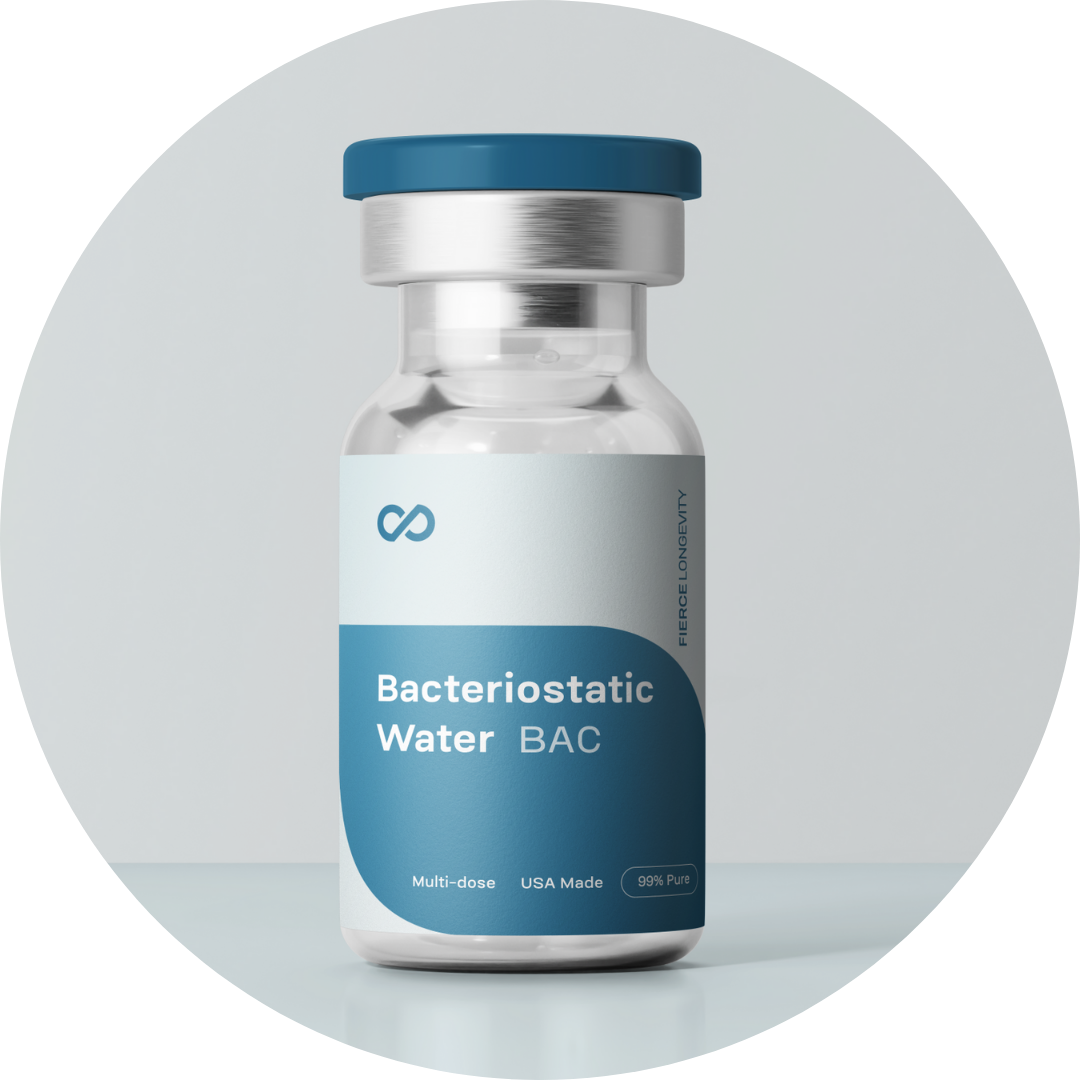
1 Vial of Bacteriostatic Water (10 mL)
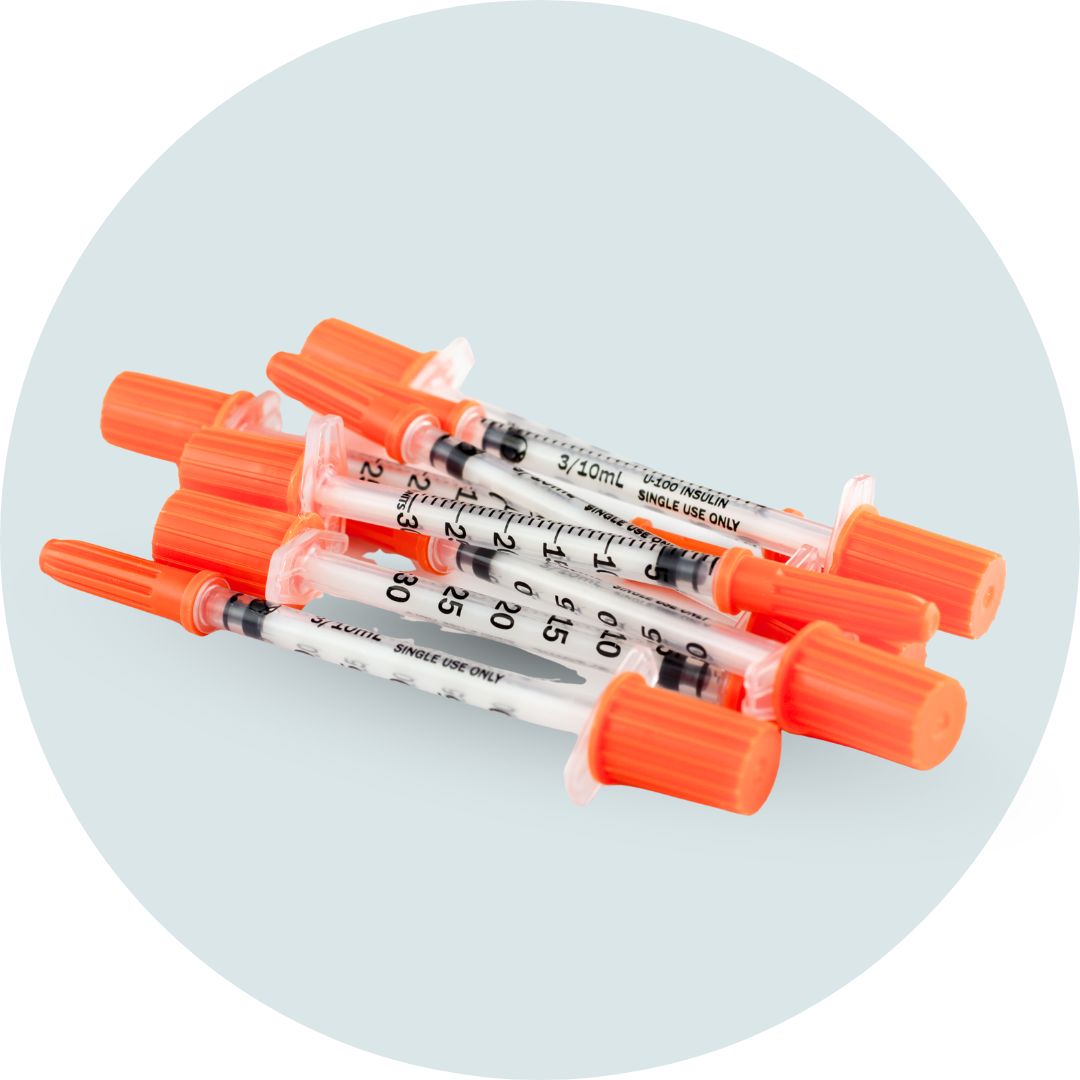
20 Insulin Syringes (31G, 5/16”, 1cc)
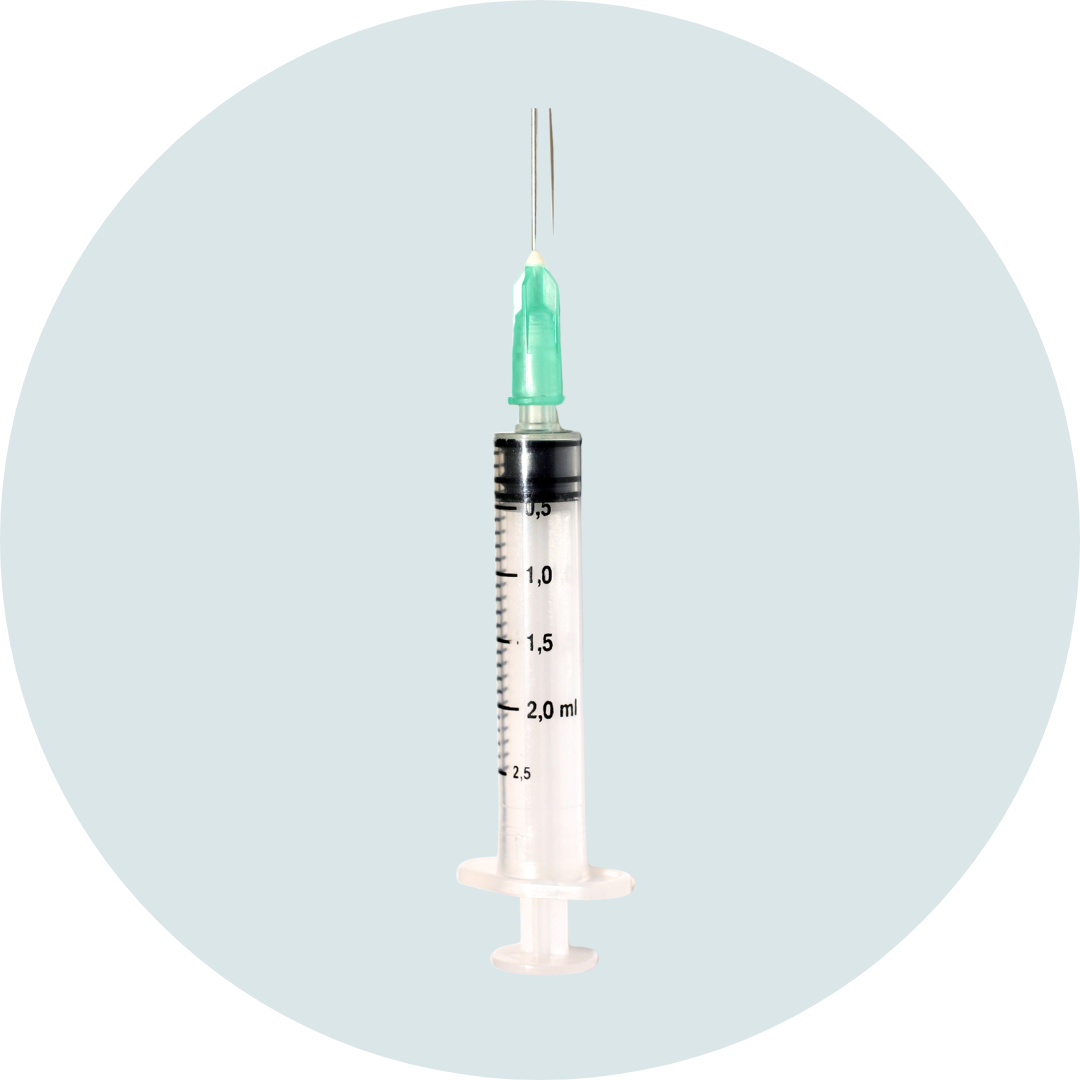
1 Reconstitution Syringe
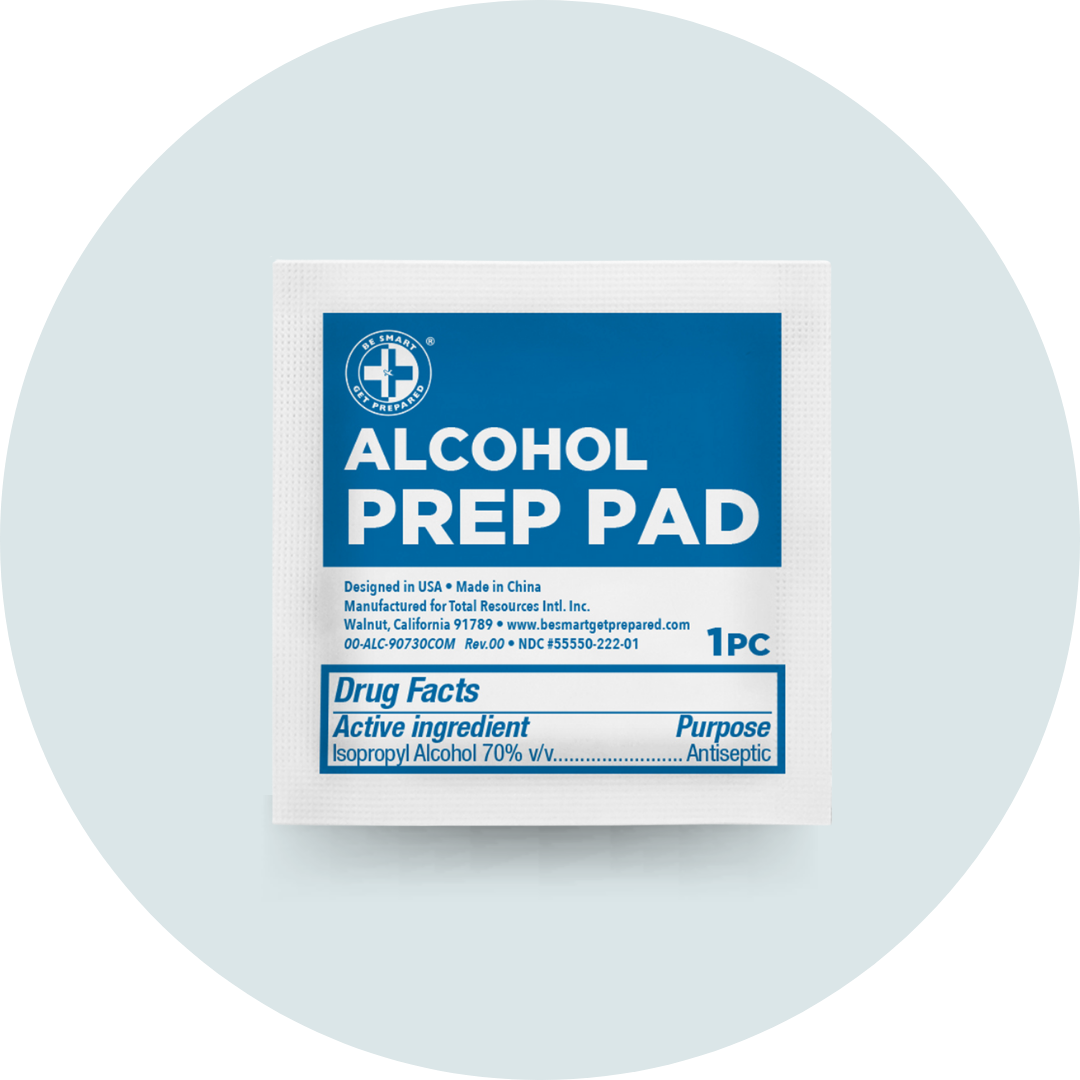
20 Alcohol Prep Swabs
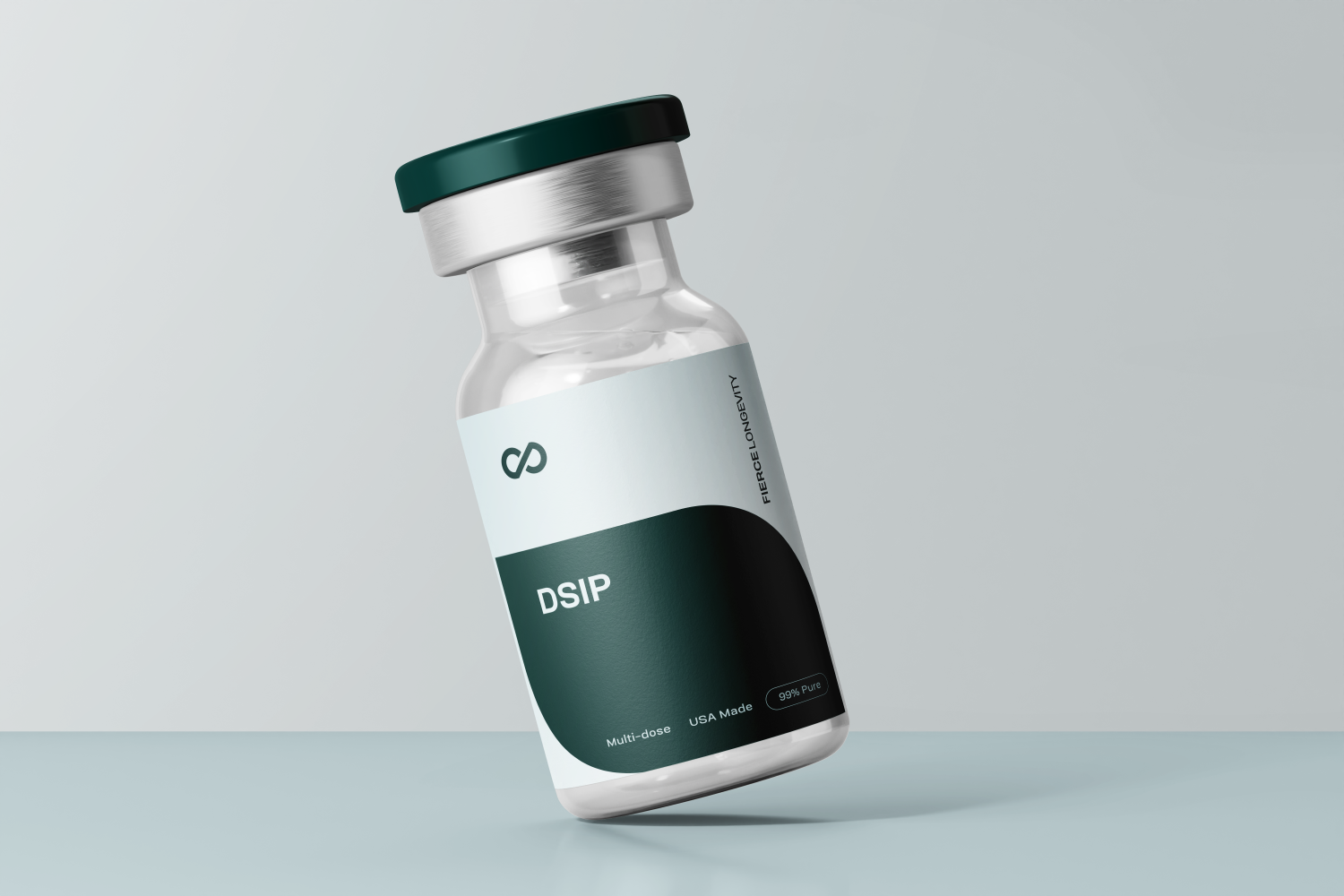
What Is DSIP?
DSIP (Delta Sleep Inducing Peptide) is a naturally occurring neuropeptide first discovered in the 1970s, known for its ability to influence deep, restorative sleep and regulate circadian rhythms.
It works by modulating key neurotransmitters and hormones involved in relaxation and stress response, such as cortisol, luteinizing hormone (LH), and growth hormone (GH).
DSIP is unique because its effects may persist beyond a single night’s sleep—helping to restore healthy sleep cycles, reduce stress, and enhance recovery over multiple days of use in research settings.
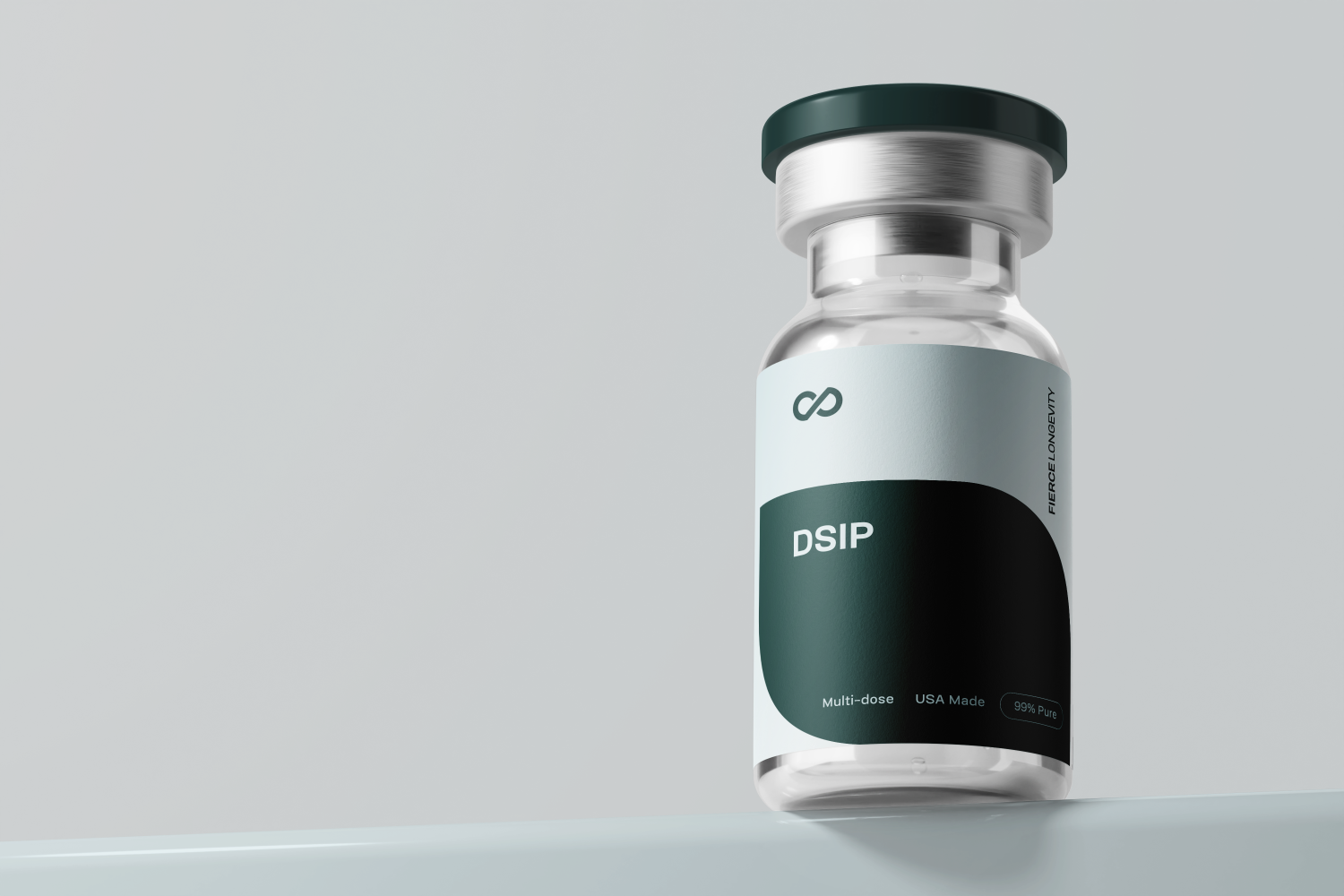
Why Choose DSIP?
Researchers choose DSIP for its multi-system regulatory effects on sleep, stress, and endocrine balance.
Its unique ability to restore disrupted circadian patterns and stimulate delta-wave activity makes it a valuable model for studying insomnia, stress recovery, and neuroendocrine function.
Each batch is produced under ISO-certified, cGMP-like conditions, HPLC-verified for ≥99% purity, and endotoxin-tested, ensuring reproducibility and reliability in neurochemical research.
DSIP FAQs
What does DSIP stand for?
DSIP stands for Delta Sleep Inducing Peptide, referring to its ability to promote delta-wave activity during deep sleep.
How does DSIP work?
It acts on multiple brain regions and hormonal pathways to regulate circadian rhythms, promote relaxation, and encourage delta-wave sleep.
How long do DSIP’s effects last?
In some research reports, a single dose has shown residual sleep-improving effects for several nights.
Can DSIP be combined with other peptides?
Yes. It’s sometimes paired with peptides that influence relaxation, recovery, or hormone regulation, such as GHRP-2 or CJC-1295.
What are the main research applications of DSIP?
Common areas include sleep disorders, stress regulation, pain management, and hormonal recovery studies.
What are the primary effects or benefits reported for DSIP?
Some of the noted effects in research and early human/animal studies include:
- Increased “sleep pressure” and promotion of slow-wave (delta) sleep
- Restored or improved sleep architecture (efficiency, fewer awakenings)
- Modulation of cortisol and stress response
- Support for hormonal balance — e.g. promoting LH, GH, or suppressing ACTH/cortisol in some models
- Analgesic (pain-reducing) effects in small clinical or animal trials
- Potential support in alcohol or opioid withdrawal symptom relief in older clinical reports
Is DSIP safe? What side effects have been reported?
DSIP has historically been considered low risk in small human studies. Side effects reported include transient headache, nausea, or vertigo.
How should DSIP be stored or prepared for use?
As with most peptides, DSIP typically comes as a lyophilized powder and must be reconstituted in a sterile, appropriate diluent (e.g. bacteriostatic water) before use. After reconstitution, it should be stored under cold conditions (e.g. 2–8°C).
Who might benefit most (or least) from DSIP in research?
Because the strongest literature exists in sleep disturbance, insomnia, chronic stress, pain, and substance withdrawal, these are common research applications.
However, DSIP is experimental and may not be suitable in settings with hormone-sensitive conditions, or where peptide degradation interactions are possible.






